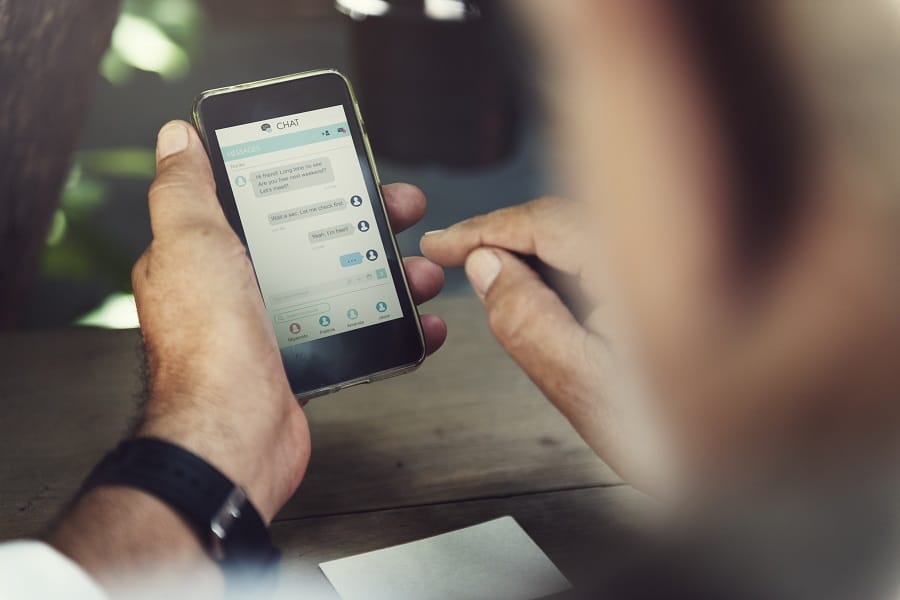
 In the ever-evolving landscape of digital communication, private messaging has emerged as a dominant and transformative force. The rise of private messaging has revolutionized the way we connect, share, and communicate in both personal and professional spheres. In this article, we will delve into the emergence of private message and explore its profound impact on our lives.
In the ever-evolving landscape of digital communication, private messaging has emerged as a dominant and transformative force. The rise of private messaging has revolutionized the way we connect, share, and communicate in both personal and professional spheres. In this article, we will delve into the emergence of private message and explore its profound impact on our lives.
The Evolution of Communication
The journey of private messaging begins with the evolution of communication technology. It’s essential to understand the context in which private messaging emerged to appreciate its significance fully. In the early days of the internet, communication was primarily email-based, and instant messaging was limited to desktop applications.
As the internet expanded and mobile technology advanced, the demand for instant communication became more prominent. People wanted a convenient and real-time way to connect with friends, family, and colleagues, regardless of their physical location. This demand led to the emergence of private messaging as a dominant mode of communication.
Key Milestones in Private Messaging
Several key milestones mark the emergence of private messaging as a dominant form of communication:
- SMS and Mobile Messaging: The advent of Short Message Service (SMS) in the late 1990s allowed users to send text messages between mobile devices, laying the foundation for mobile messaging. Mobile messaging apps like BlackBerry Messenger (BBM) became popular for their real-time communication capabilities.
- Rise of Smartphone Apps: The introduction of smartphones with app ecosystems paved the way for dedicated messaging apps. WhatsApp, released in 2009, became a game-changer, offering secure and efficient messaging across platforms.
- Multimedia Messaging: Messaging apps evolved to support multimedia content, including photos, videos, voice notes, and documents. This made communication more dynamic and expressive.
- Social Media Integration: Messaging became more integrated with social media platforms, allowing users to connect with their existing contacts. Facebook Messenger and Instagram Direct Messages are prime examples of this integration.
- Security and Privacy Focus: With concerns about privacy and data security on the rise, messaging apps started offering end-to-end encryption to protect user data and messages from unauthorized access.
Impact on Personal Communication
Private messaging has transformed the way we interact in our personal lives:
- Real-Time Connectivity: Private messaging apps enable real-time communication, making it easy to stay in touch with loved ones, regardless of their location. This has become especially valuable in an era of globalization and international relationships.
- Rich Media Sharing: Sharing photos, videos, and multimedia content is now an integral part of personal communication. Private messaging apps have made it effortless to share life’s moments.
- Emojis and Stickers: Emojis, stickers, and GIFs have added a layer of expressiveness to text-based conversations, allowing users to convey emotions and sentiments more effectively.
- Privacy and Control: Private messaging apps often provide privacy settings that allow users to control who can contact them and view their status or profile information. This gives users a sense of control over their communication.
Impact on Professional Communication
The emergence of private messaging has had an equally significant impact on professional communication:
- Remote Collaboration: Private messaging apps have become vital tools for remote teams. They facilitate instant communication, allowing colleagues to collaborate efficiently, share updates, and coordinate tasks.
- Customer Engagement: Businesses have embraced private messaging as a channel for customer engagement and support. Customers can easily reach out to companies, ask questions, and receive assistance in real-time.
- Multichannel Communication: Private messaging apps often support multiple channels, enabling businesses to engage with customers across various platforms, including SMS, social media messaging, and website chat widgets.
- File Sharing and Document Collaboration: Messaging apps have evolved to include features for file sharing and document collaboration, making it easier for professionals to work together on projects and share critical information.
The Future of Private Messaging
The emergence of private messaging is far from over. As technology continues to advance, we can anticipate several trends that will shape its future:
- Enhanced Security: With growing privacy concerns, messaging apps will likely continue to enhance their security features, including end-to-end encryption and advanced authentication methods.
- Integration with Emerging Technologies: Messaging apps may integrate with emerging technologies like augmented reality (AR) and virtual reality (VR) to create more immersive communication experiences.
- Artificial Intelligence (AI): AI-driven features, such as chatbots and smart replies, may become more prevalent in private messaging, improving user experiences and customer support.
- Cross-Platform Compatibility: Messaging apps may become more compatible across different devices and operating systems, making it easier for users to switch between devices while maintaining their conversations.
In conclusion, the emergence of private messaging has reshaped the way we communicate in both personal and professional contexts. It has bridged geographical gaps, enabled real-time connectivity, and enhanced the richness of our interactions. As it continues to evolve and adapt to changing technological landscapes, private messaging will remain a central pillar of our digital communication ecosystem.
